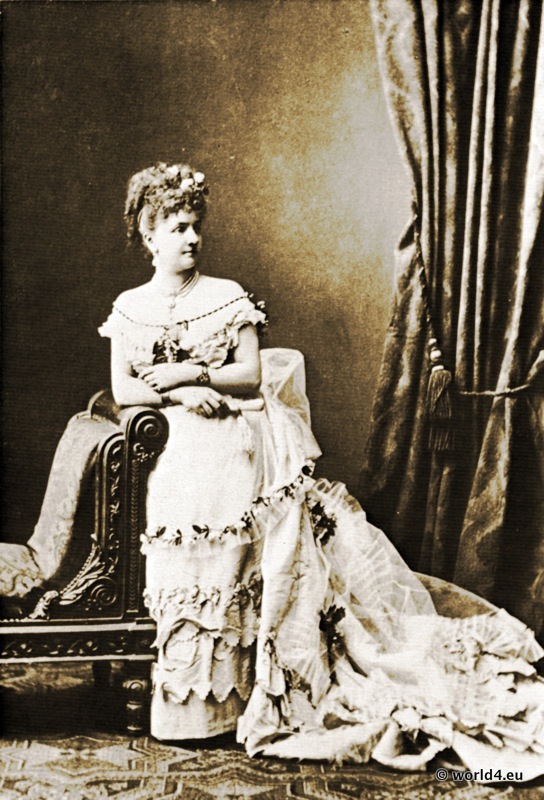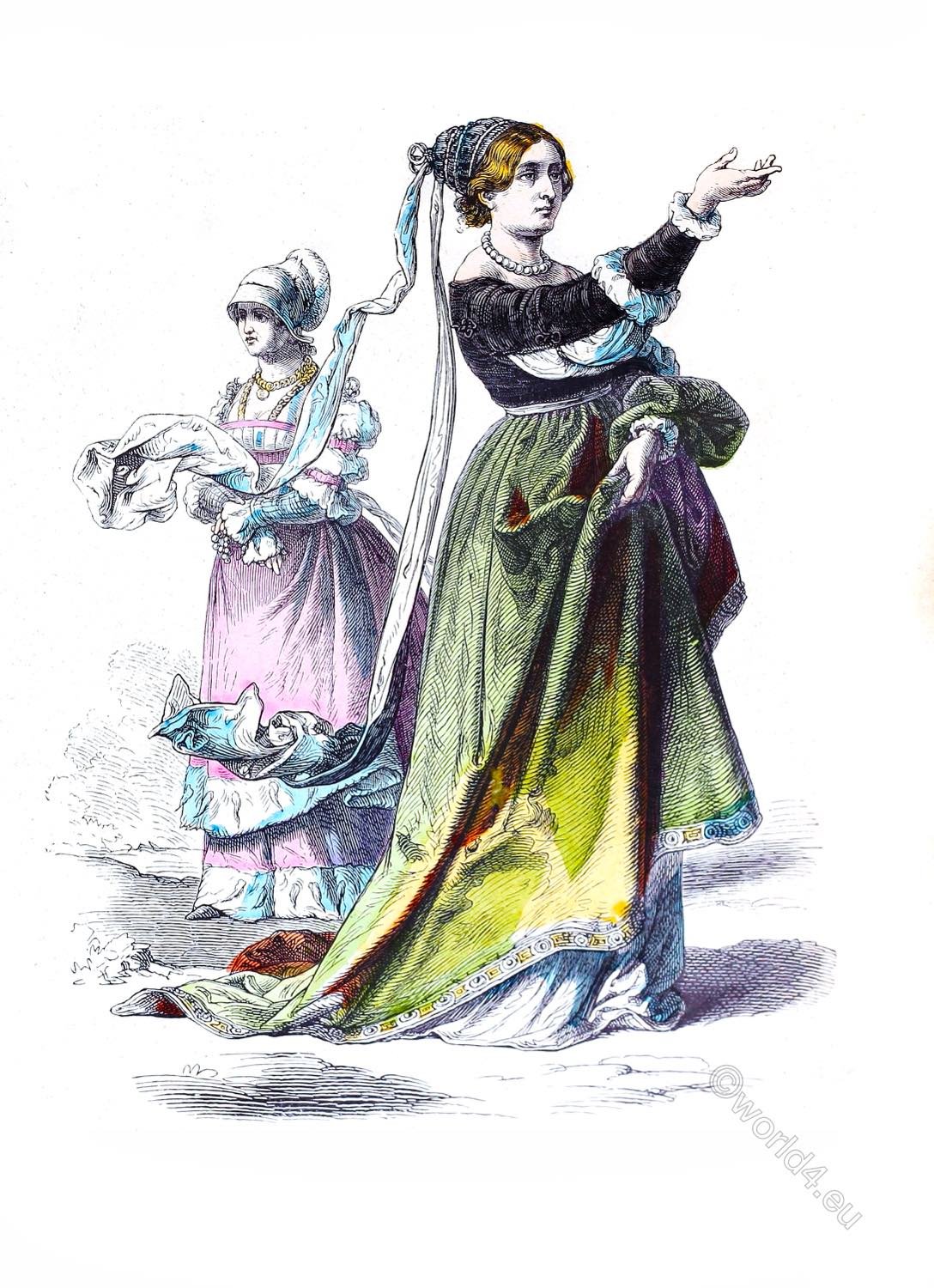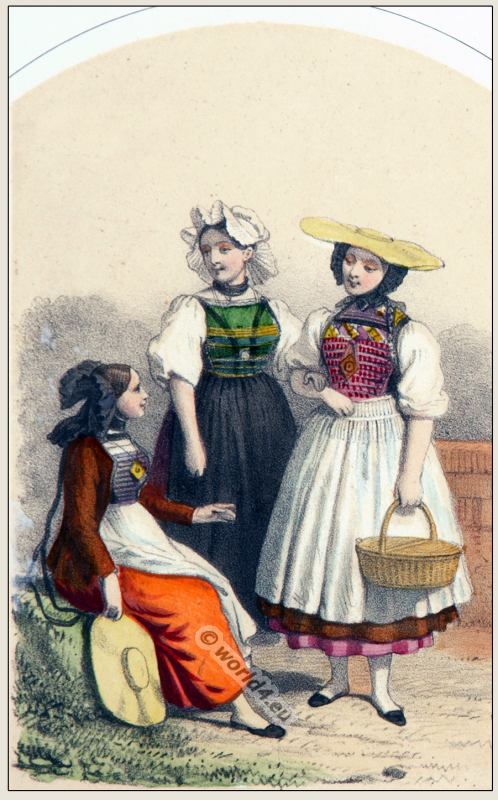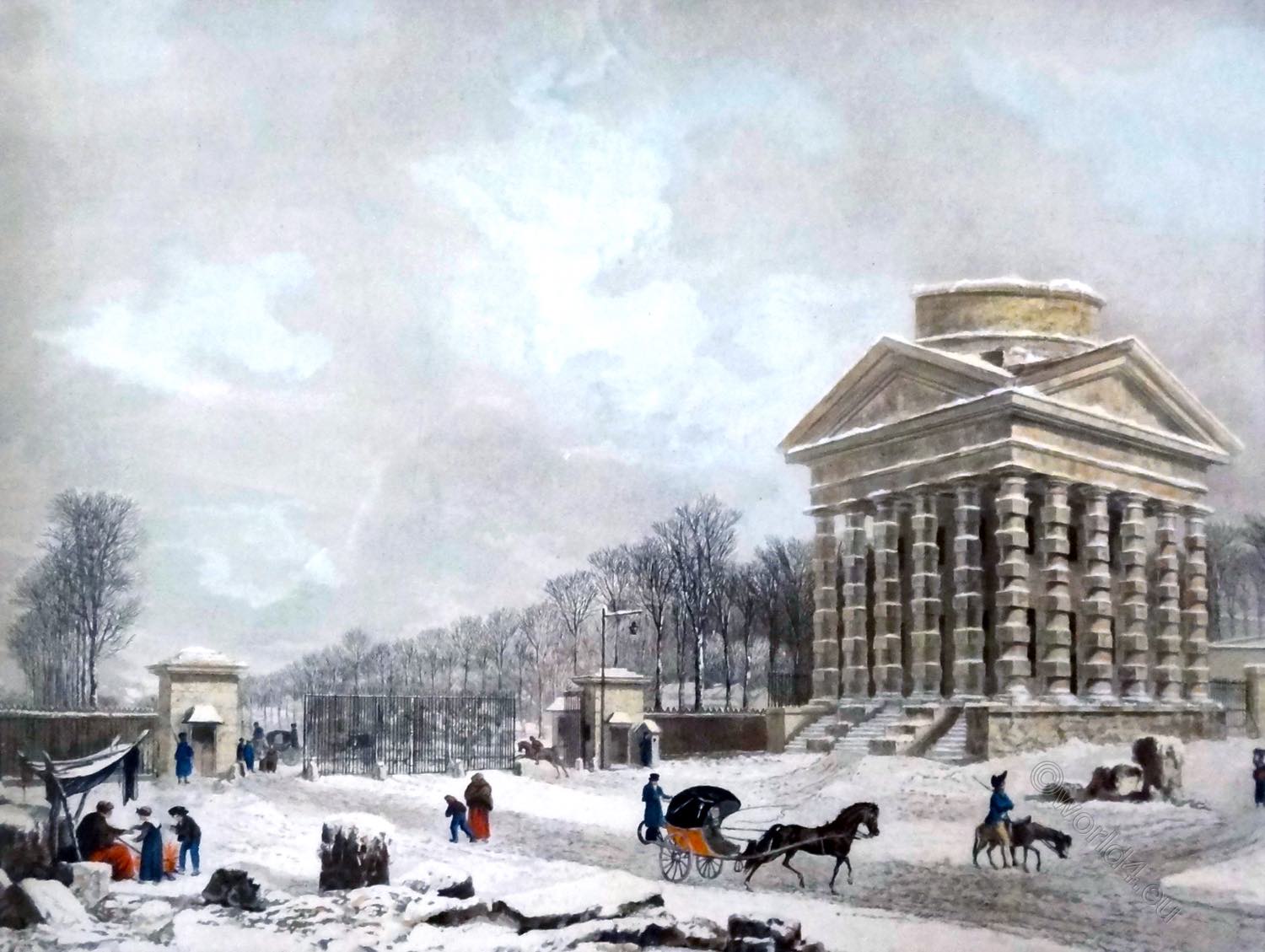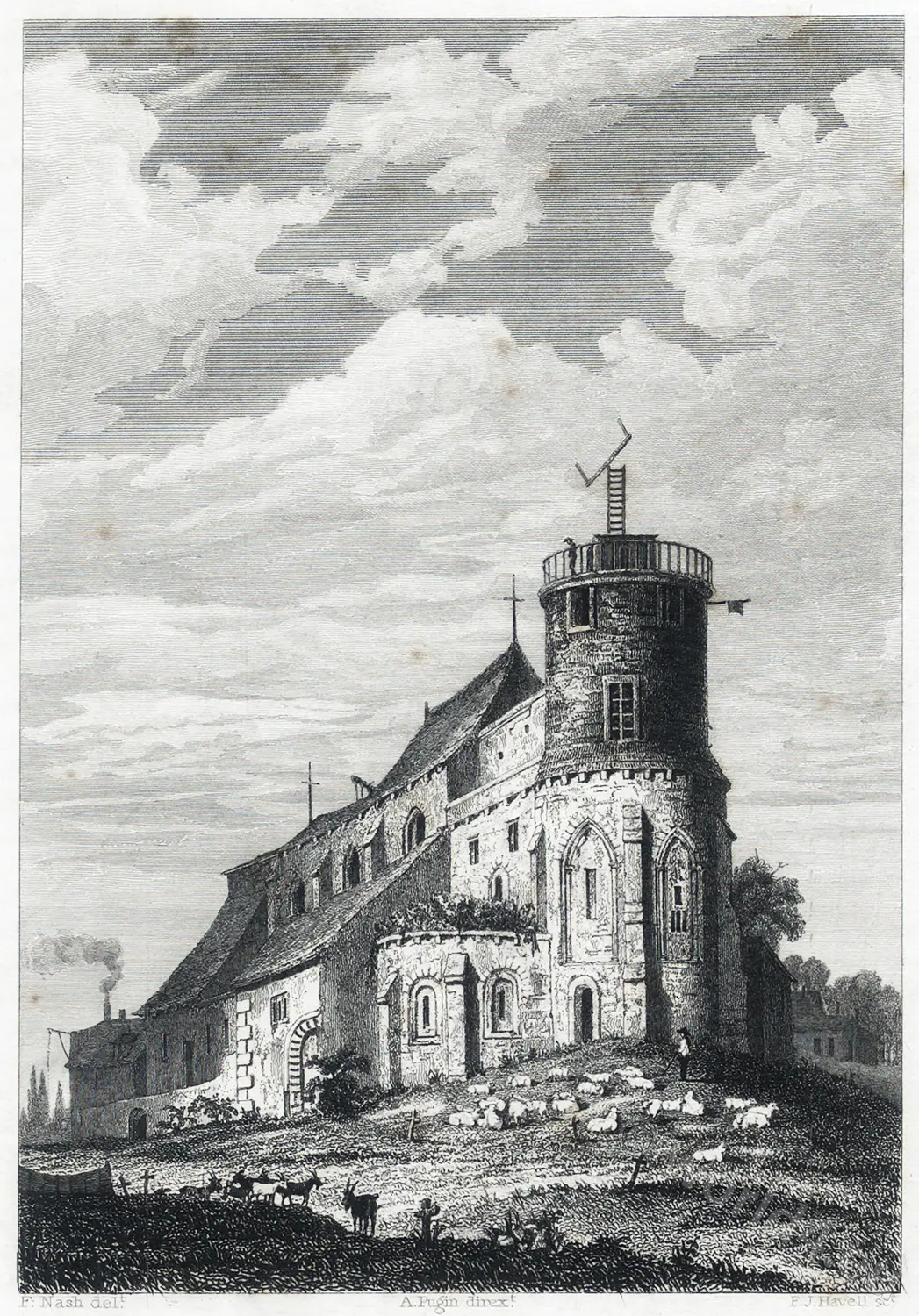Cul de Paris in Germany 1880.
The term Cul de Paris refers to a silhouette of female fashion that appeared several times in the course of costume history and was characterised by a strong emphasis/overemphasis on the rear. Where the reference to Paris comes from is not clear. Possibly the inventor wanted to satirically suggest that only city dwellers could fall for such extreme fashions, which were often considered ridiculous by contemporaries.
The first Cul de Paris around 1700 puffed up the manteau. Although underpinnings under the skirt had been used before to change the silhouette (see hoop skirt, woman’s bodice), around 1700 the bulge shifted to the back.
The second Cul de Paris developed from 1772 parallel to the Robe à la polonaise, which owed its special silhouette partly to pads and partly to the dress skirt puffed out at the back. It was later also worn with the Robe à l’anglaise. This fashion lasted until about 1780.
In the late 19th century, the Cul de Paris returned twice in quick succession, in 1872-1876 and 1882-1886. These two fashion silhouettes are also known as the first and second tournures, after the skirt support used at the time.
In each case, this fashion was largely confined to the wealthy classes.
Discover more from World4 Costume Culture History
Subscribe to get the latest posts sent to your email.

